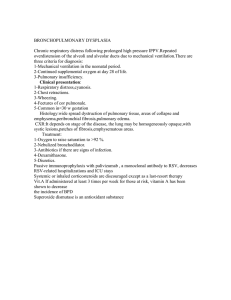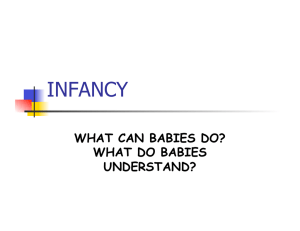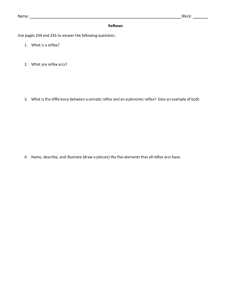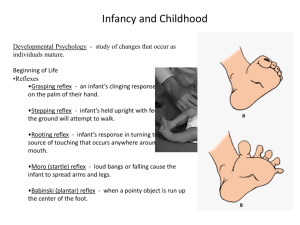pediatric physical exam
advertisement
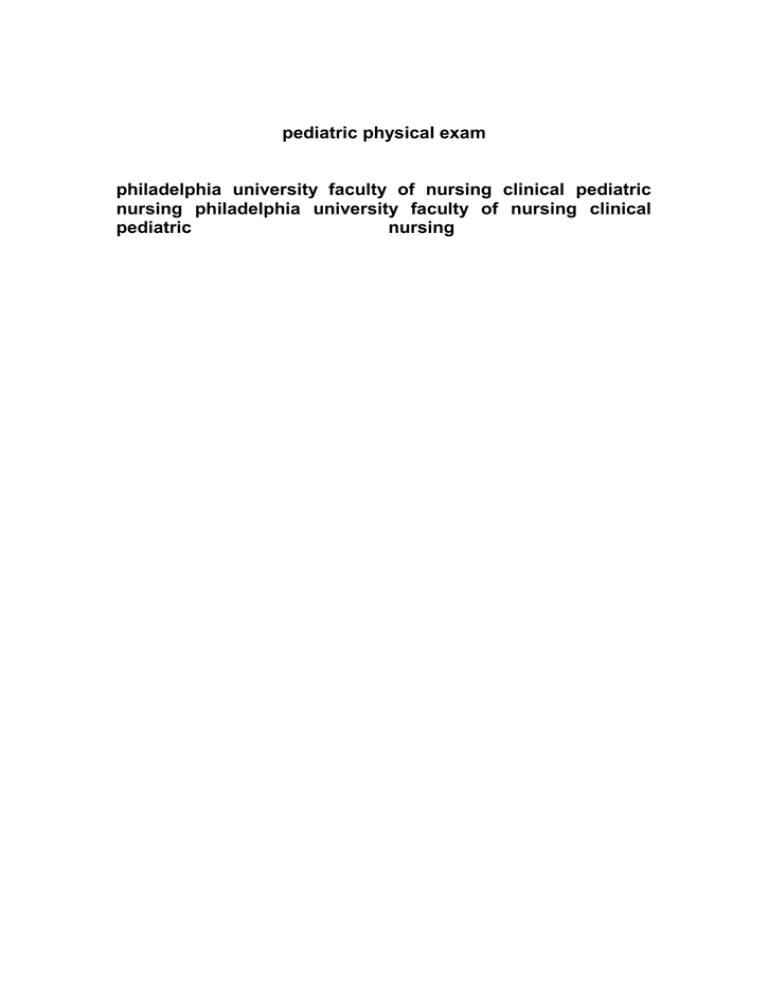
pediatric physical exam philadelphia university faculty of nursing clinical pediatric nursing philadelphia university faculty of nursing clinical pediatric nursing introduction introduction . key elements. . times: . every month in the 1 st year. . every 3 month of the 2 nd and 3 rd year. . each 6 month of 4 th and 5 th year. . yearly after the 6 th year. .key elements. .times: .every month in the 1st year. .every 3 month of the 2nd and 3rd year. .each 6 month of 4th and 5th year. .yearly after the 6th year. . avoid touching painful areas until confidence has been gained. . begin exam without instruments. . allow child to determine order of exam if practical. . use the same format as adult physical exam. .avoid touching painful areas until confidence has been gained. .begin exam without instruments. .allow child to determine order of exam if practical. .use the same format as adult physical exam. physical exam physical exam infant exam infant exam . examine on parent lap. . leave diaper on. . comfort measures such as pacifier or bottle. . talk softly. . start with heart and lung sounds. . ear and throat exam last. .examine on parent lap. .leave diaper on. .comfort measures such as pacifier or bottle. .talk softly. .start with heart and lung sounds. .ear and throat exam last. toddler exam toddler exam . examine on parent lap if uncooperative. . use play therapy. . distract with stories. . let toddler play with equipment / bp. . call by name. . praise frequently. . quickly do exam. .examine on parent lap if uncooperative. .use play therapy. .distract with stories. .let toddler play with equipment / bp. .call by name. .praise frequently. .quickly do exam. history taking history taking . personal hx. . life styles. . health hx. (past and current). . family hx. .personal hx. .life styles. .health hx. (past and current). .family hx. growth measurements growth measurements . wt. . ht. . hc. . cc. . mid arm c. . sft. .wt. .ht. .hc. .cc. .mid arm c. .sft. head, chest, and abdominal circumference. head, chest, and abdominal circumference. msotw9_temp0 physiological measurements physiological measurements . temp. (sites). . pulse. . rr. . bp. .temp. (sites). .pulse. .rr. .bp. physical exam technique physical exam technique . inspection - eye only. . palpation - tip of finger. . percussion use. . . . dullness (solid organ), resonance (over solid organ or filled air), tympanic (hollow organ). . auscultation stethoscope. .inspection- eye only. .palpation- tip of finger. .percussion- use. . . .dullness (solid organ), resonance (over solid organ or filled air), tympanic (hollow organ). .auscultationstethoscope. span physical assessment physical assessment . general appearance & behavior: &bull facial expression. &bull posture / movement. &bull hygiene. &bull behavior. &bull development: grossly fits guidelines for age. .general appearance & behavior: &bull facial expression. &bull posture / movement. &bull hygiene. &bull behavior. &bull development: grossly fits guidelines for age. skin skin . color, texture, turgor, lesion and pigmentation (jaundice, cyanosis, pale). . palpate: moisture and dryness. . temp. . edema: extremities and buttocks. . lesions: primary and secondary. .color, texture, turgor, lesion and pigmentation (jaundice, cyanosis, pale). .palpate: moisture and dryness. .temp. .edema: extremities and buttocks. .lesions: primary and secondary. hair hair . texture, color, distribution. .texture, color, distribution. nails nails . shape and contour, surface, edge . capillary refill: how .shape and contour, surface, edge .capillary refill: how lymph nodes lymph nodes . sites, ch.ch, enlarged, warmth .sites, ch.ch, enlarged, warmth head head . fontanels: shape . assess symmetry of both sides. . palpate for size and closure. . 1 - anterior closed 18 24 m. . 2 - posterior closed at 0 - 2 m. . sunken fontanel &ndash dehydration. . bulging - increase icp (cough, vomiting, crying). .fontanels: shape .assess symmetry of both sides. .palpate for size and closure. .1- anterior closed 18-24 m. .2- posterior closed at 0-2 m. .sunken fontanel &ndash dehydration. .bulging- increase icp (cough, vomiting, crying). fontanels3 eyes eyes . examine external structure of the: . 1 conjunctiva - glassy . 2 - sclera - clear . 3 - cornea - cover the iris and pupil . 4 - pupils - compare for size, shape, test for reaction. . 5 - iris - color, size and clarity. 6 - 12 m. .examine external structure of the: .1- conjunctiva- glassy .2- scleraclear .3- cornea- cover the iris and pupil .4- pupils- compare for size, shape, test for reaction. .5- iris- color, size and clarity. 6-12 m. nose nose . assess for symmetry, deformity, skin lesion. . palpate for septal deviation. . smooth and moist, with pinkish color. .assess for symmetry, deformity, skin lesion. .palpate for septal deviation. .smooth and moist, with pinkish color. mouth and throat mouth and throat . lips: color, moisture, lesion. . teeth: #, sequence, eruption and occlusion. . gum: color, inflammation or swelling. . tongue: color, shape, deformity, ulceration. . oropharynx: use tongue blade, color. . tonsils: pink, inflammation or inspection. .lips: color, moisture, lesion. .teeth: #, sequence, eruption and occlusion. .gum: color, inflammation or swelling. .tongue: color, shape, deformity, ulceration. .oropharynx: use tongue blade, color. .tonsils: pink, inflammation or inspection. ears ears . external shape and size. . pinna: line, low set ear (retardation). . internal structure. .external shape and size. .pinna: line, low set ear (retardation). .internal structure. ear exam ear exam msotw9_temp0 pinna is pulled down and back to straighten ear canal in children under 3 years. otitis media otitis media . most common reason children come to the pediatrician or emergency room. . fever at ear. . often increases at night when they are sleeping. . history of cold or congestion. .most common reason children come to the pediatrician or emergency room. .fever at ear. .often increases at night when they are sleeping. .history of cold or congestion. why a problem? why a problem? . infection can lead to rupture of ear drum. . chronic effusion can lead to hearing loss. . om is often a contributing factor in more serious infections: mastoiditis, cellulitis, meningitis, bacteremia. . chronic ear effusion in the early years may lead to decreased hearing and speech problems. .infection can lead to rupture of ear drum. .chronic effusion can lead to hearing loss. .om is often a contributing factor in more serious infections: mastoiditis, cellulitis, meningitis, bacteremia. .chronic ear effusion in the early years may lead to decreased hearing and speech problems. chest chest . anatomy. . inspection: symmetry, movement of chest wall. . breathing pattern - abdominal breathing. . palpation: . 1 - light palpation: in light circular motion to detect lesion and masses . 2 - deep palpation: palpate for internal organ like liver and spleen. .anatomy. .inspection: symmetry, movement of chest wall. .breathing patternabdominal breathing. .palpation: .1- light palpation: in light circular motion to detect lesion and masses .2- deep palpation: palpate for internal organ like liver and spleen. . start from breast, lymph nodes, and pulses. . use back of hand to assess temp. . use palm to assess vibration. . assess respiratory excursion during insp. and exp. . posterior assessment at the level of spinal column at the level of 10 th ribs. . assess tactile fremitus. .start from breast, lymph nodes, and pulses. .use back of hand to assess temp. .use palm to assess vibration. .assess respiratory excursion during insp. and exp. .posterior assessment at the level of spinal column at the level of 10th ribs. .assess tactile fremitus. . percussion of the chest: put patient in supine position, or in side. . percussion technique: record what you hear. .percussion of the chest: put patient in supine position, or in side. .percussion technique: record what you hear. . auscultation: used to assess the flow of air through the bronchial tree and to evaluate the presence of fluid or solid in lung structure. . anterior - axillary line. . mid - clavicular line. . mid - sternal line. . posterior axillary line. . scapular line. . vertebral line. . use stethoscope and move from side to side. .auscultation: used to assess the flow of air through the bronchial tree and to evaluate the presence of fluid or solid in lung structure. .anterior-axillary line. .mid-clavicular line. .midsternal line. .posterior axillary line. .scapular line. .vertebral line. .use stethoscope and move from side to side. msotw9_temp0 chest assessment chest assessment . retractions &bull subcostal &bull intercostal &bull sub - sternal &bull supra clavicular red flags: grunting / nasal flaring .retractions &bull subcostal &bull intercostal &bull sub-sternal &bull supraclavicular red flags: grunting / nasal flaring possible sites of retractions possible sites of retractions msotw9_temp0 observe while infant or child is quiet. wheeze or stridor wheeze or stridor . wheezes occur when air flows rapidly through bronchi that are narrowed nearly to the point of closure. . wheezes is lower airway &bull asthma = expiratory wheezes . a stridor is upper airway &bull inflammation of upper airway or fb .wheezes occur when air flows rapidly through bronchi that are narrowed nearly to the point of closure. .wheezes is lower airway &bull asthma = expiratory wheezes .a stridor is upper airway &bull inflammation of upper airway or fb breathing sounds breathing sounds . 1 - bronchial: over trachea . 2 - vesicular breath sound: entire surface of the lung (soft, swishing noise). . 3 - broncho - vesicular: over manubrium and upper intra - scapular region. . best heard in 5 th ics at the mcl and aal. .1- bronchial: over trachea .2vesicular breath sound: entire surface of the lung (soft, swishing noise). .3- broncho-vesicular: over manubrium and upper intra-scapular region. .best heard in 5th ics at the mcl and aal. heart examination heart examination . palpation over four area: . 1 - aortic area: felt in the 2 nd ics to the rt. of sternum. . 2 - pulmonary area: felt in the 2 nd ics to the lt. of the sternum. . 3 - rt. ventricular or tricuspid area - felt in 5 th ics. . 4 - mitral area: felt in the 5 th ics to the lt. of the sternum under nipple. .palpation over four area: .1- aortic area: felt in the 2nd ics to the rt. of sternum. .2- pulmonary area: felt in the 2nd ics to the lt. of the sternum. .3- rt. ventricular or tricuspid area- felt in 5th ics. .4- mitral area: felt in the 5th ics to the lt. of the sternum under nipple. . apical impulse best felt in the lateral to the mcl and 4 th ics for child under 7 th year. . at the lt. mcl and 5 th ics for child above 7 th year. . pmi: at apical impulse. .apical impulse best felt in the lateral to the mcl and 4th ics for child under 7th year. .at the lt. mcl and 5th ics for child above 7th year. .pmi: at apical impulse. exm05 . auscultation of the heart: s 1 , s 2 , s 3 . . percussion of heart to detect ?? .auscultation of the heart: s1, s2, s3. .percussion of heart to detect ?? heart sounds heart sounds msotw9_temp0 abdomen exam abdomen exam . use supine position with pillow under the head and knee flexed. . divide abd. to 4 quadrant, and examine from button to top. . examination of the abdomen involve the inspection, auscultation, palpation and percussion. .use supine position with pillow under the head and knee flexed. .divide abd. to 4 quadrant, and examine from button to top. .examination of the abdomen involve the inspection, auscultation, palpation and percussion. msotw9_temp0 abdominal girth abdominal girth auto1 abdominal girth should be measured over the umbilicus whenever possible. abdquad inspection inspection . for contour, symmetry, ch.ch of umbilicus, skin pulsation and movement. . tense board is a serious sign of paralytic illus and intestinal obstruction. .for contour, symmetry, ch.ch of umbilicus, skin pulsation and movement. .tense board is a serious sign of paralytic illus and intestinal obstruction. auscultation auscultation . listen for peristalsis or bowel sounds for full minute. . listen for bruit of the major arteries. . listen around the umbilicus and epigastric region for venous hum (soft low pitched and con.). .listen for peristalsis or bowel sounds for full minute. .listen for bruit of the major arteries. .listen around the umbilicus and epigastric region for venous hum (soft low pitched and con.). bowel sounds bowel sounds . normally occur every 10 to 30 seconds. . listen in each quadrant long enough to hear at least one bowel sound. . absence of bowel sounds may indicate peritonitis or a paralytic ileus. . hyperactive bowel sounds may indicate gastroenteritis or a bowel obstruction. .normally occur every 10 to 30 seconds. .listen in each quadrant long enough to hear at least one bowel sound. .absence of bowel sounds may indicate peritonitis or a paralytic ileus. .hyperactive bowel sounds may indicate gastroenteritis or a bowel obstruction. palpation palpation . put patient in comfortable position. . warm your hands. . teach to be calm. . start in superficial to deep. . late any tender area. . palpate lq and upward, for liver and spleen. . kidneys. .put patient in comfortable position. .warm your hands. .teach to be calm. .start in superficial to deep. .late any tender area. .palpate lq and upward, for liver and spleen. .kidneys. genitalia genitalia . inspect genitalia for size, shape, and deformity. . consider male and female structures. . palpate the male scrotom for &hellip .inspect genitalia for size, shape, and deformity. .consider male and female structures. .palpate the male scrotom for &hellip musculoskeletal system musculoskeletal system . bone, joints - cartilages, ligaments and muscles. . inspect the joint for flexion and extension, abduction, adduction, rotation. . inspect the symmetry and observe the edema. .bone, jointscartilages, ligaments and muscles. .inspect the joint for flexion and extension, abduction, adduction, rotation. .inspect the symmetry and observe the edema. spine spine . normally the back of the newborn is round or c shape. . older child develop to s shape. .normally the back of the newborn is round or c shape. .older child develop to s shape. extremities extremities . assess symmetry of length and size. . observe shape of bones, temp, and color. . observe for bowlegs. and space b/t the knee more than 5 cm. should disappear after 2 - 3 y. . inspect for knock - knee: from 2 - 7 y, and distance between two ankle should not exceed 3 cm. . palpate for presence on edema. . assess muscle strength. . muscle tone estimation. .assess symmetry of length and size. .observe shape of bones, temp, and color. .observe for bowlegs. and space b/t the knee more than 5 cm. should disappear after 2-3y. .inspect for knock-knee: from 2-7y, and distance between two ankle should not exceed 3 cm. .palpate for presence on edema. .assess muscle strength. .muscle tone estimation. bowleg1 bowleg2 reflexes reflexes 1 - moro reflex (startle reflex) 1- moro reflex (startle reflex) . infants will respond to sudden sounds or movements by throwing their arms and legs out, and throwing their heads back. most infants will usually cry when startled and proceed to pull their limbs back into their bodies. .infants will respond to sudden sounds or movements by throwing their arms and legs out, and throwing their heads back. most infants will usually cry when startled and proceed to pull their limbs back into their bodies. . hold supine infant by arms a few inches above bed. gently droping infant back to elicit startle . baby throws arms out in extension and baby grimaces. . disappears by 3 months. .hold supine infant by arms a few inches above bed. gently droping infant back to elicit startle .baby throws arms out in extension and baby grimaces. .disappears by 3 months. moro_reflex 2 - hand - to - mouth (babkin) reflex 2- hand-to-mouth (babkin) reflex . stroke newborns cheek or put finger in babies palm . baby will bring his fist to mouth and suck a finger. . disappears by 2 years. .stroke newborns cheek or put finger in babies palm .baby will bring his fist to mouth and suck a finger. .disappears by 2 years. 3 - gripping reflex (palmar grasp) 3- gripping reflex (palmar grasp) . babies will grasp anything that is placed in their palm. the strength of this grip is strong, and most babies can support their entire weight in their grip. . when an object is placed in the infant s hand and strokes their palm, the fingers will close and they will grasp it. . disappears at 3 to 4 months. .babies will grasp anything that is placed in their palm. the strength of this grip is strong, and most babies can support their entire weight in their grip. .when an object is placed in the infant s hand and strokes their palm, the fingers will close and they will grasp it. .disappears at 3 to 4 months. grasp reflex 4 - rooting reflex 4- rooting reflex . the rooting reflex is most evident when an infant s cheek is stroked. the baby responds by turning his or her head in the direction of the touch and opening their mouth for feeding. . disappears at 3 - 4 months. .the rooting reflex is most evident when an infant s cheek is stroked. the baby responds by turning his or her head in the direction of the touch and opening their mouth for feeding. .disappears at 3-4 months. rootingreflex-248x171 5 - toe curling reflex (plantar reflex) 5- toe curling reflex (plantar reflex) . when the inner sole of a baby &rsquo s foot is stroked, the infant will respond by curling his or her toes. when the outer sole of a baby &rsquo s foot is stroked, the infant will respond by spreading out their toes. . disappears at 8 to 10 months .when the inner sole of a baby&rsquo s foot is stroked, the infant will respond by curling his or her toes. when the outer sole of a baby&rsquo s foot is stroked, the infant will respond by spreading out their toes. .disappears at 8 to 10 months babinski 6 - stepping reflex 6- stepping reflex . when an infant is held upright with his or her feet placed on a surface, he or she will lift their legs as if they are marching or stepping. . disappears by 2 months. .when an infant is held upright with his or her feet placed on a surface, he or she will lift their legs as if they are marching or stepping. .disappears by 2 months. k7a06507 7 - sucking reflex 7- sucking reflex . the sucking reflex is initiated when something touches the roof of an infants mouth. infants have a strong sucking reflex which helps to ensure they can latch onto a bottle or breast. the sucking reflex is very strong in some infants and they may need to suck on a pacifier for comfort. . disappears at 10 to 12 months. .the sucking reflex is initiated when something touches the roof of an infants mouth. infants have a strong sucking reflex which helps to ensure they can latch onto a bottle or breast. the sucking reflex is very strong in some infants and they may need to suck on a pacifier for comfort. .disappears at 10 to 12 months. newborn reflexes newborn reflexes . tonic neck: disappears by 4 to 6 months .tonic neck: disappears by 4 to 6 months
